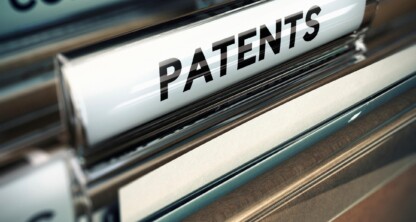
Oyvind Dahle
Senior Counsel
Oyvind Dahle works with organizations to provide patent protection of technologies, such as chemical compounds and polymers, pharmaceutical compositions and delivery systems; immunotherapeutics using engineered antigen binding proteins, such as multispecific immunoglobulin-based molecules and chimeric antigen receptor T cell receptors; stem cell therapy; genetic modification technologies, such as Clustered Regularly Interspaced Short Palindromic Repeats (CRISPR); artificial intelligence-based drug discovery and diagnostics; diagnostic methods, such as liquid biopsy; next-generation sequencing (NGS), multiplex PCR, single-cell sequencing, and medical devices. In addition to drafting and prosecuting patents, Oyvind has experience with providing patentability, invalidity, and freedom-to-operate opinions, and representing patent owners on appeals and inter partes reviews before the Patent Trial and Appeal Board (PTAB). He is a member of the firm’s Chemical, Biotechnology & Pharmaceutical Practice.
Oyvind joined Foley & Lardner as an associate in 2016, and prior to that, he externed at the U.S. Patent and Trademark Office’s Office of Patent Legal Administration, where he gained experience in patent examination procedures and assessments.
Oyvind also has extensive experience as a scientist and has a Ph.D. in biochemistry. In particular, he has worked at Leidos, Inc. as a scientist, at the National Cancer Institute’s Laboratory of Protein Dynamics and Signaling as a research fellow, and at the National Cancer Institute in its Experimental Immunology Branch as a postdoctoral fellow. At the National Cancer Institute, Oyvind conducted research on the development and function of the immune system, the pathology of cancer such as multiple myeloma, stem cell function and applications, and early embryonic development.
Presentations and Publications
- Author, “GLP-1 Receptor Agonists and Patent Strategy: Securing Patent Protection for New Use of Old Drugs,” Health Care Law Today (March 12, 2025)
- Author, “Cancer Drugs: Strategies For Patenting Antibody-Drug Conjugate Inventions,” Health Care Law Today (April 29, 2024)
- Author, “The Absurdity of Patent Ineligible Categories: The Discrepancy Between the Ariosa and Cellzdirect Decisions Highlights the Problems Created by Formalistic Adjudication of Patent Eligibility,” Wake Forest Journal of Business and Intellectual Property Law, Vol. 17 No. 1 (2016)
- Co-author, “Inhibiting Smad2/3 Signaling in Pluripotent Mouse Embryonic Stem Cells Enhances Endoderm Formation by Increasing Transcriptional Priming of Lineage-Specifying Target Genes,” Developmental Dynamics, Vol. 245 Issue 7 (2016)
- Co-author, “Polycomb Determines Responses to Smad2/3 Signaling in Embryonic Stem Cell Differentiation and in Reprogramming,” Stem Cells, Vol. 31 Issue 8 (2013)
- Presenter, “Epigenetics in Development Polycomb Determines Smad2/3 Responses During Cell Fate Transitions in Stem Cell Differentiation and Reprogramming,” National Institutes of Health, Maryland (2013)
- Co-author, “Nodal Signaling Recruits Histone Demethylase Jmjd3 to Counteract Polycomb Repression at Target Genes,” Science Signaling, Vol. 3 Issue 127 (2010)
- Co-author, “FLASH Acts as a Co-activator of the Transcription Factor c-Myb and Localizes to Active RNA Polymerase II Foci,” Oncogene, Vol. 27 (2008)
- Co-author, “The Chromatin Remodeling Factor Mi-2 Acts as a Novel Co-activator for Human c-Myb,” The Journal of Biological Chemistry, Vol. 282 (2007)
- Co-author, “Coreceptor Signal Strength Regulates Positive Selection but Does Not Determine CD4/CD8 Lineage Choice in a Physiologic in Vivo Model,” The Journal of Immunology, Vol. 177 Issue 10 (2006)
- Co-author, “PML Mediates IFN-alpha-induced Apoptosis in Myeloma by Regulating TRAIL Induction,” Blood, Vol. 105 (2005)
- Co-author, “c-Myb Associates with PML in Nuclear Bodies in Hematopoietic Cells,” Experimental Cell Research, Vol. 297 Issue 1 (2004)
- Co-author, “Transactivation Properties of c-Myb Are Critically Dependent on Two SUMO-1 Acceptor Sites That Are Conjugated in a PIASy Enhanced Manner,” European Journal of Biochemistry, Vol. 270 (2003)
- Co-author, “JAB1/CSN5 Interacts with the GAL4 DNA Binding Domain: A Note of Caution About Two-Hybrid Interactions,” Biochimie, Vol. 83 Issue 10 (2001)
Languages
- Norwegian
/Passle/63109459f636e905f41c4854/SearchServiceImages/2025-03-25-13-45-33-914-67e2b37dba6fc66a3098dbaa.jpg)
The Virtual Lab of AI Agents: A New Frontier in Innovation

GLP-1 Receptor Agonists and Patent Strategy: Securing Patent Protection for New Use of Old Drugs
/Passle/63109459f636e905f41c4854/SearchServiceImages/2025-03-10-15-01-49-684-67cefedd5a697cf6e763cc59.jpg)
Beyond the Polanyi Paradox: How Human-Aware AI Unlocks Creativity And Breakthrough Discoveries
/Passle/63109459f636e905f41c4854/SearchServiceImages/2025-02-25-17-00-40-366-67bdf738cf55e00d88a95fb9.jpg)
TinyML: Small AI, Big Impact
/Passle/63109459f636e905f41c4854/SearchServiceImages/2025-02-24-13-43-40-444-67bc778ca974b8c116a0e04f.jpg)